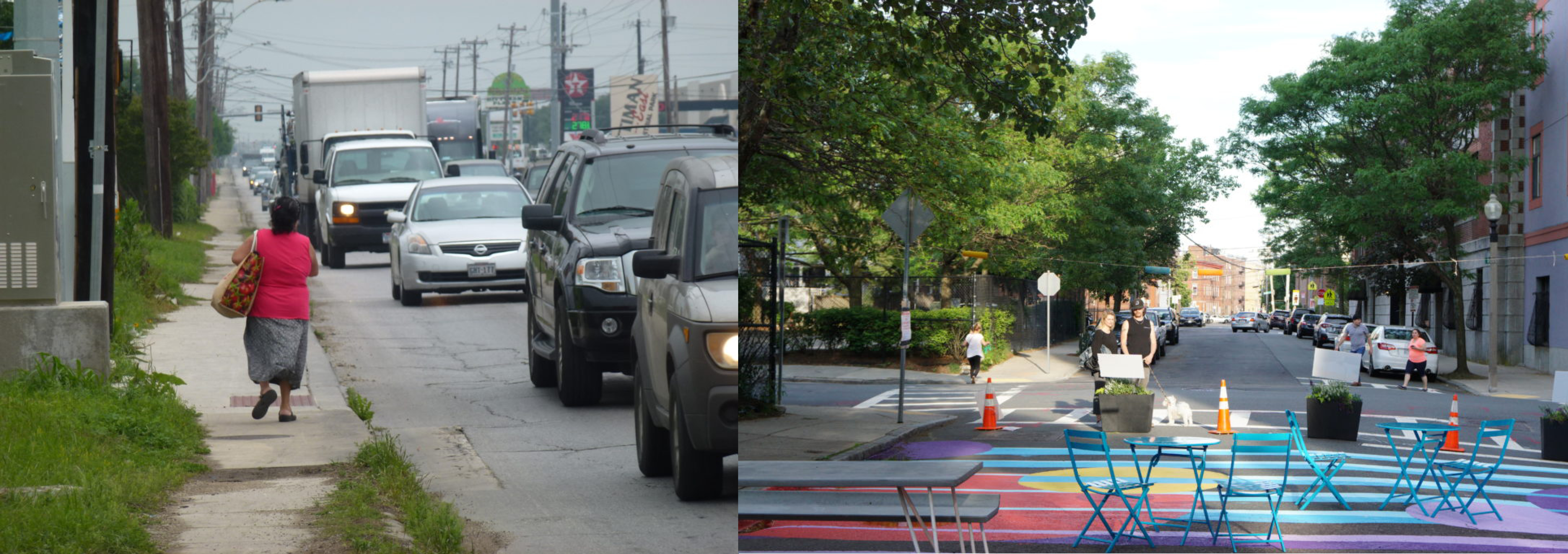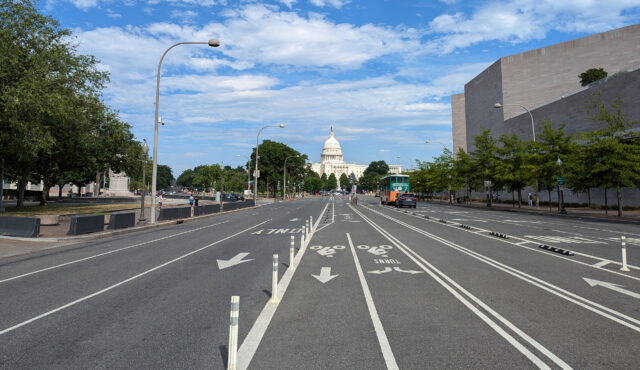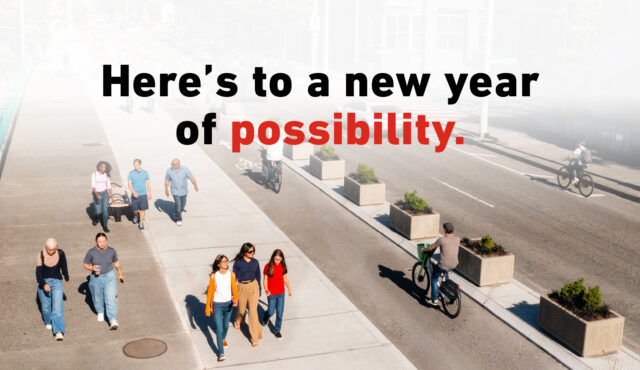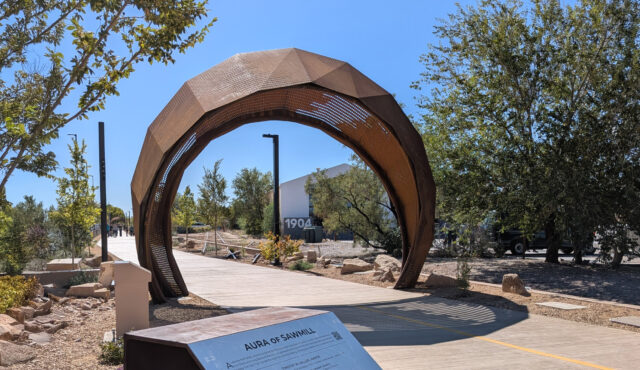
Silver Spring
Seeing “environment” included in a Toole Design post about the new E’s of transportation probably isn’t a big surprise. Our planners, designers, and engineers care a lot about the deep connections between transportation and the world we work in, from the local built environment to the global climate. Reading daily about the worsening climate crisis reminds me of the disproportionately large impact humans have on the world in which we live.
Yet “Environment” is actually not one of our new E’s of transportation.
Part of the reason it doesn’t make the list is that there are all kinds of professional disciplines focused on protecting and preserving the environment that can be every bit as siloed as engineering or enforcement—not necessarily a good thing when it comes to holistic problem-solving and decision-making. Mostly, however, it’s because we need a shift in how we think about protecting the environment. The environment may be the big subject, but what we need to talk about is how we use the values of the New E’s—ethics, equity, and empathy—to solve environmental problems.
Twelve years. That’s how long a group of leading climate scientists says we have to prevent the worst impacts of climate change by reducing carbon pollution by nearly half. It feels like a daunting task, particularly when individuals and communities consider the scope of the problem and how much effort and sacrifice it will take to address it. The only ethical choice is to do something about this.
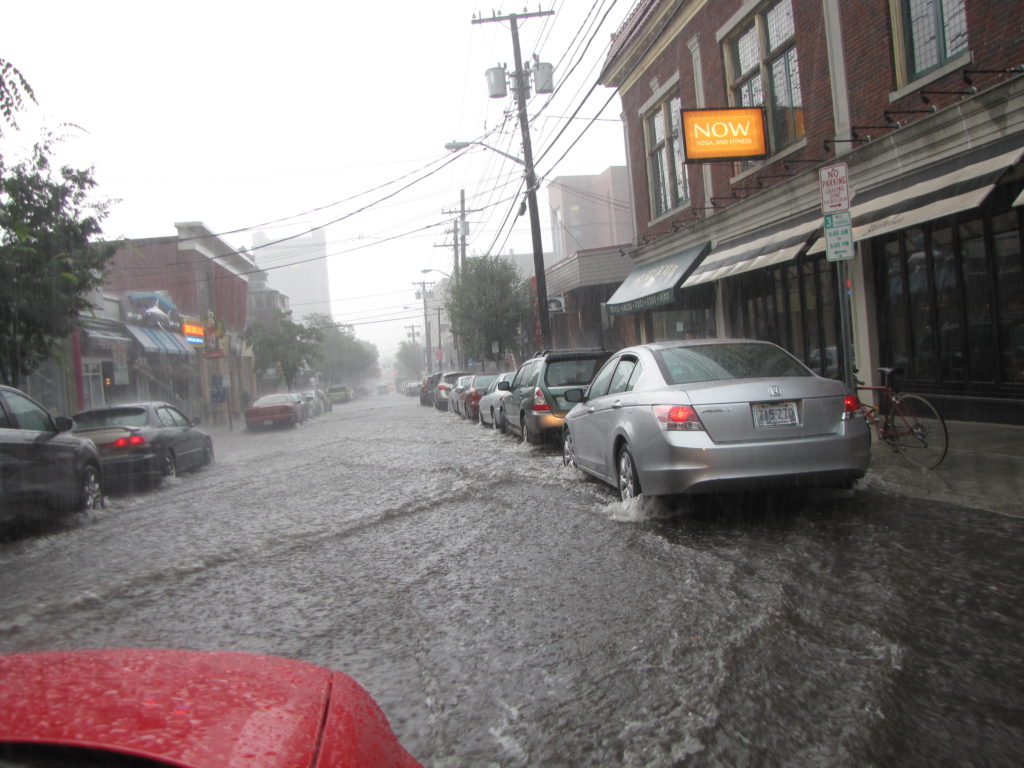
Transportation is the largest source of greenhouse gas emissions in the United States, contributing 29% of all air pollutants and making it a substantial contributor to the climate crisis. Not surprisingly, that pollution comes primarily from internal combustion engines and the cars and trucks that are powered by them. Thus, transportation—how we get around, and the choices available to us—provides the single biggest opportunity to stave off the worst of climate change and to adapt to the changes that may still come.
The neighborhoods that are best suited to help tackle climate change are the places where you can travel safely and comfortably without a car. In these places, it’s easy and affordable to walk or bike or take transit to most of your daily needs, like jobs, fresh food, health care, and social and recreational activities. A variety of transportation choices are there to give people who live, work, or visit the ability to access everything that makes life worth living; to provide this is to truly understand people’s long-term health, safety, and happiness. That’s empathy for the human condition.
Yet in North America, these kinds of places are rare. In many parts of the continent, they’re also increasingly expensive and sought-after. As a result, the effects of the climate crisis aren’t being distributed evenly. This is an equity issue, as the communities that already grapple with a lack of resources and opportunities are being put at an even greater disadvantage. Consider the images below: from non-car transportation options to absorbing the blow of a hurricane, blizzard, or heat wave, the neighborhood on the right is far more equipped to handle climate change than the one on the left.
As environmental trends lead to rising temperatures, unstable weather conditions, and unreliable food supplies, the burden could fall hardest on people from historically disadvantaged communities that already lack access to fresh food, health care, and economic opportunities. People trapped in far-flung, auto-dependent communities will be saddled both with the high costs of transportation and all the negative externalities caused by transportation.
As transportation professionals, we have an ethical imperative to consider the role that transportation infrastructure plays in climate-related challenges. We have to demonstrate empathy for future generations by giving them more resilient communities, with safer, more comfortable pedestrian and bicycle infrastructure. And we have to consider equity, by ensuring that everyone has the choice of sustainable transportation options to access all of the things that make life worth living now, and in the near future.
